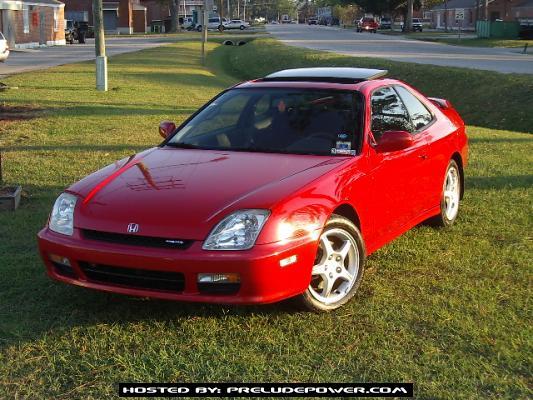 2001 honda prelude
2001 honda prelude 2001 honda prelude
2001 honda preludeThe sporty Honda Prelude went away this model year, after a long run. But then that really isn’t a great surprise.
The last few years Honda hasn’t sold many Preludes in Canada. That despite the excellent build quality, crisp handling, lively performance, advanced technical features and sharp styling of the 1997-2001 Prelude.
So what’s worth knowing about the Prelude, which was reinvented for the 1997 model year? During its final five-year run Honda Canada sold three versions: the base and Type SH were offered through 2000, then in 2001 the Type SH was replaced by the Prelude SE.
Initially, both versions were powered by a 195-horsepower multi-valve four-cylinder engine, and horsepower edged up to 200 in its last few years. This engine employs race-car style variable valve timing to squeeze out tons of power from 2.2 litres of displacement. (Variable valve timing or VTEC as Honda calls it, allows for changes in the lift and timing of the intake and exhaust valves to improve engine breathing, thereby pumping up the horsepower.)
Regardless of which model, standard features included power glass sunroof, power heated side mirrors/door locks/windows, green heat absorbing glass, driver’s seat height adjustment, air conditioning, AM/FM CD player w/acoustic feedback system and six speakers, cruise control, full analogue instruments, tilt steering, front passenger walk-in seat, fold-down rear seatback w/lock and a 12-volt power outlet.
The Type SH added Honda’s own Active Torque Transfer System or ATTS, special alloy wheels, a real spoiler and a leather-wrapped shift knob. The Type SH was available only with a five-speed manual transmission, while the base car came with a choice of five-speed manual or four-speed automatic with ‘Sportshift’ manual shift mode.
Stylistically, all versions of Prelude look identical except for the SH’s rear spoiler. Compared to the last generation Prelude, the ‘97 model was designed with sharper edges, more angular lines and vertical headlamps. The cabin designers included tasteful shapes and features, all with a fairly typical Honda flavour. A major, major improvement from 1997 onward was the switch from digital gauges, which in the ‘96 car were stretched out across the dashboard in an arrangement reminiscent of a ‘65 Chevy Impala, to easy-to-read conventional instruments sitting in a pod directly in front of the driver.
Honda also gave the ‘97 car a larger trunk with a wider opening at the rear. To enhance cargo-hauling flexibility, the rear seatback of this Prelude folds down and locks.
From a driver’s perspective, this Prelude feels stronger and more solid. Credit a much more rigid body for allowing the suspension engineers to fine-tune the ride and handling. Of course, those engineers get to work on a nifty four-wheel double wishbone suspension–a very advanced suspension design and quite a feature for a front-wheel-drive car.
The Prelude shows off excellent straight-line stability for such a small, light car. Braking is surprisingly stable, too. But the Prelude really shines in the corners, where roll is well controlled and tracking is sure and predictable.
Finally, a few words about ATTS. It works something like traction control in reverse to give the driver greater control during cornering.
This really is a good and affordable used sports car, but be warned that the cabin is not overly roomy.
Used vehicle prices vary depending on factors such as general condition, odometer reading, usage history and options fitted. Always have a used vehicle checked by an experienced auto technician before you buy.
For information on recalls, see Transport Canada’s web-site, www.tc.gc.ca, or the U.S. National Highway Transportation Administration (NHTSA)web-site, www.nhtsa.dot.gov.
For information on vehicle service bulletins issued by the manufacturer, visit www.nhtsa.dot.gov.
For information on consumer complaints about specific models, see www.lemonaidcars.com.
Jeremy Cato is an award-winning print and broadcast journalist. He is a columnist and feature writer for the Globe & Mail newspaper and his articles are syndicated to a variety of other publications. Jeremy is also a member of the Automobile Journalists Association of Canada (AJAC).
No comments:
Post a Comment